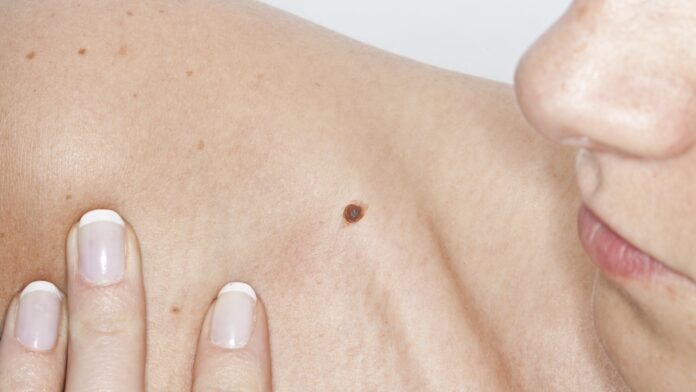Have you ever noticed a lingering mole or mark on your skin that looks a bit odd? It’s essential not to ignore it, especially as cases of melanoma are on the rise.
According to Cancer Research UK, melanoma rates are expected to hit a record high of 20,800 in Britain this year. While not all spots are cause for concern, it’s crucial to be cautious rather than dismissive.
The latest figures reveal that melanoma rates have increased from 21 to 28 per 100,000 people between 2007-09 and 2017-19. The most significant spike has been in the over-80s, with diagnoses rising by 57% since 2014.
Melanoma often starts as a new mole or a change in an existing mole. Following the ABCDE rule can help assess the health of a mole, and if it meets certain criteria, it’s worth getting it checked:
- Asymmetrical shape
- Border irregularity
- Colour variation
- Diameter larger than 6mm
- Enlargement or elevation over time
Understanding Different Types of Skin Cancer
Skin cancer can be categorized into three major types: basal cell carcinoma, squamous cell carcinoma, and melanoma. With early detection, skin cancer has a survival rate of 90% if caught at stage one, and experts estimate that 86% of cases are preventable.
Exposure to UV light from the sun or tanning beds is a common cause of skin cancer. To prevent skin cancer, limit sun exposure, and always wear high-factor, broad-spectrum SPF when outdoors, advises Dr. Kaye.
Skin cancer is often signaled by a change in a mole, freckle, or normal patch of skin. Recognizing the symptoms of the most common types of skin cancer is crucial for early detection and treatment.
Melanoma: Types and Warning Signs
Melanoma is identified by moles that are evenly colored, about a quarter of an inch in size, and can be flat or raised. The most crucial warning sign is a new spot on the skin or a change in an existing mole.
Superficial spreading melanoma and nodular melanoma are common types of melanoma, each with their own characteristics and risks. Lentigo maligna melanoma, typically affecting older individuals, develops slowly over time and appears in sun-exposed areas.
Basal Cell Carcinoma
Basal cell carcinoma (BCC) affects the outer layers of skin cells. It is slow-growing and rarely spreads to other parts of the body. However, if left untreated, BCCs can become more aggressive and spread into deeper layers of skin and bones.
Signs of BCC include a smooth, pearly skin growth that may bleed, scab, or develop a crust. Early treatment for BCC is usually highly successful, but more advanced cases may require more intensive treatment.
Squamous Cell Carcinoma
Squamous cell carcinoma is a type of non-melanoma skin cancer that affects the keratinocyte cells in the outer skin layer. Recognizable by its scaly appearance, crusty cap, and tenderness, early detection is key to successful treatment.
When detected early, treatment for skin cancer can be effective, with surgery being the primary method of removal. The type and extent of treatment depend on various factors, including the type and stage of skin cancer.
Regular skin checks and prompt medical attention for any changes in moles or skin spots can make a significant difference in identifying and treating skin cancer early. Remember, early detection saves lives.

